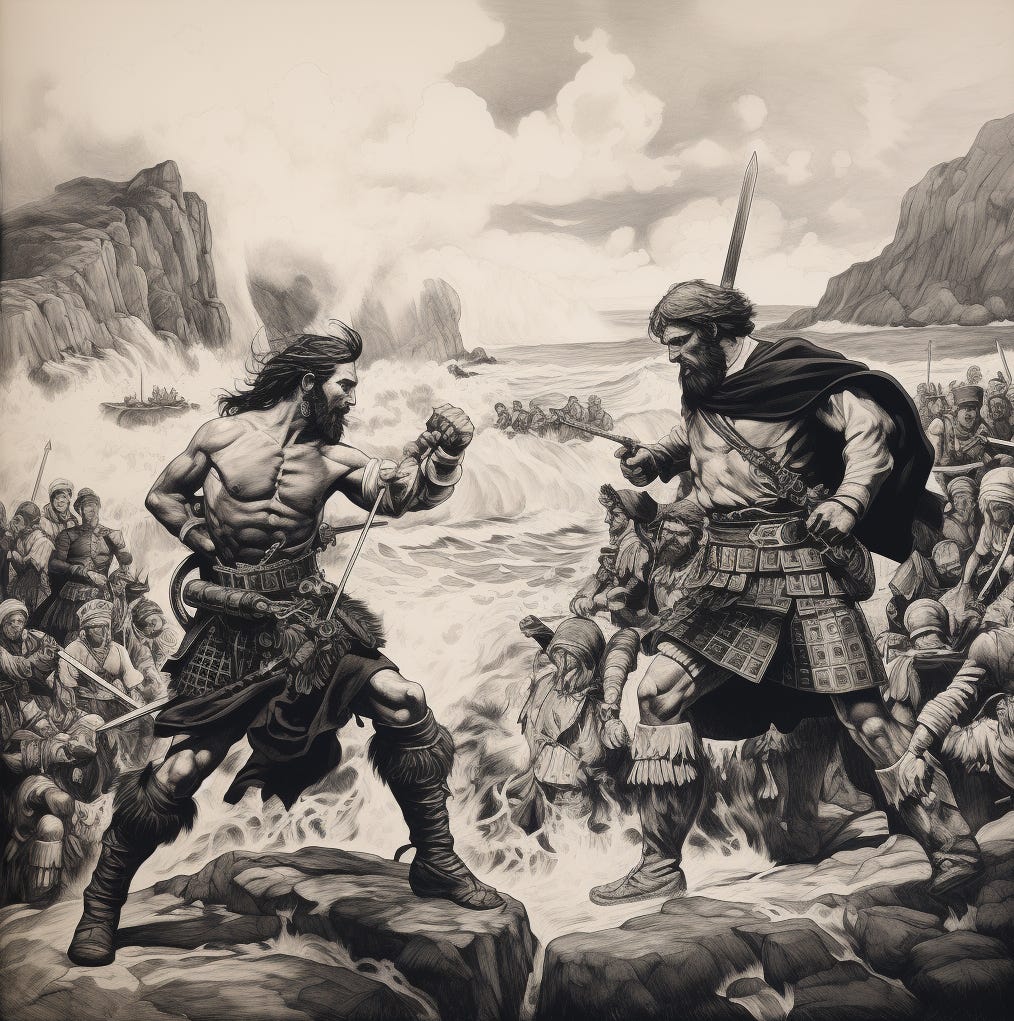Warriors of the Isles: The Clash of Clan MacLean and Clan MacNeil
As the sun dipped below the horizon over the stunning Inner Hebrides, a backdrop of rolling hills, rugged coastlines, and the whispering winds set the stage for an age-old saga of rivalry and power. The feud between Clan MacLean and Clan MacNeil, two formidable Scottish clans, unfolded across the picturesque landscapes of the islands of Coll and Tiree. This epic tale of enmity, set against the backdrop of the late medieval era, is a testament to the complex interplay of pride, heritage, and territorial ambition that shaped the fate of these Highland warriors.
The Clash of Titans: Location, Setting, and Historical Context
In the midst of the Western Isles, the islands of Coll and Tiree rose from the tumultuous sea, bearing witness to a fierce rivalry that echoed through the annals of Scottish history. During the late medieval period, when Scotland's Highlands were a tapestry of warring clans, Clan MacLean and Clan MacNeil emerged as two mighty forces in the region. The setting was defined by the awe-inspiring landscapes of these islands, where towering cliffs met sweeping shorelines, and where time seemed to stand still amidst the whispering heather and the tumultuous waves.
The Players: Clan MacLean and Clan MacNeil
Clan MacLean: Hailing from the Isle of Mull, Clan MacLean was renowned for their unwavering loyalty and their galley emblem that symbolized their mastery of the seas. Led by the Laird of Duart, they held a firm grip on the islands of Coll and Tiree, considering them integral to their dominion.
Clan MacNeil: Residing in Barra, Clan MacNeil was led by the Chief of Barra and Gigha. Eager to expand their influence, they coveted the islands of Coll and Tiree, seeking to challenge Clan MacLean's supremacy. Their unyielding loyalty to their chieftain shaped their identity and forged their indomitable spirit.
The Dispute and Territorial Claims
The dispute between these clans centered on the ownership of Coll and Tiree, lands considered of vital importance due to their strategic location and abundant resources. Clan MacLean's historical ties to these islands clashed with Clan MacNeil's desire to stake their claim. The enmity was further fueled by whispers of MacNeil's alliances with rival clans, intensifying MacLean's suspicions.
The Battles Unfold: The Battle of Grisipol and Beyond
The Battle of Grisipol
The crescendo of this rivalry came to a head in the Battle of Grisipol, a clash that would etch its mark on the history of both clans. Coll's dramatic rocky shores and the windswept plains bore witness to this monumental confrontation. The battle was a symphony of steel meeting steel, as the warriors of Clan MacLean and Clan MacNeil clashed in a brutal dance of bloodshed. The echoes of clashing swords and the war cries of fierce combatants reverberated through the landscape, as the two sides fought with an unrelenting determination.
The turning point arrived with the MacLean’s brilliant strategy. Amidst the chaos, they outwitted MacNeill's forces, feigning retreat and luring them to a cave near the Hidden Anchorage. This maneuver sealed the fate of Clan MacNeil, marking the end of their resistance.
Aftermath and Legacy
The Battle of Grisipol marked a turning point, solidifying Clan MacLean's dominance over Coll and Tiree. The feud between Clan MacLean and Clan MacNeil left an indelible imprint on the Highland landscape, shaping local traditions, stories, and the unbreakable spirit of these communities.
Conclusion
The feud between Clan MacLean and Clan MacNeil stands as a testament to the intricate dynamics of power, honor, and ambition that defined the Scottish Highlands in the late medieval era. Against the backdrop of Coll and Tiree's awe-inspiring landscapes, this rivalry exemplified the potent mix of historical factors that drove clans to claim their place in history. The battles that unfolded across these islands, particularly the Battle of Grisipol, serve as a reminder of the sacrifices, strategic brilliance, and the enduring legacy of these Highland warriors.





